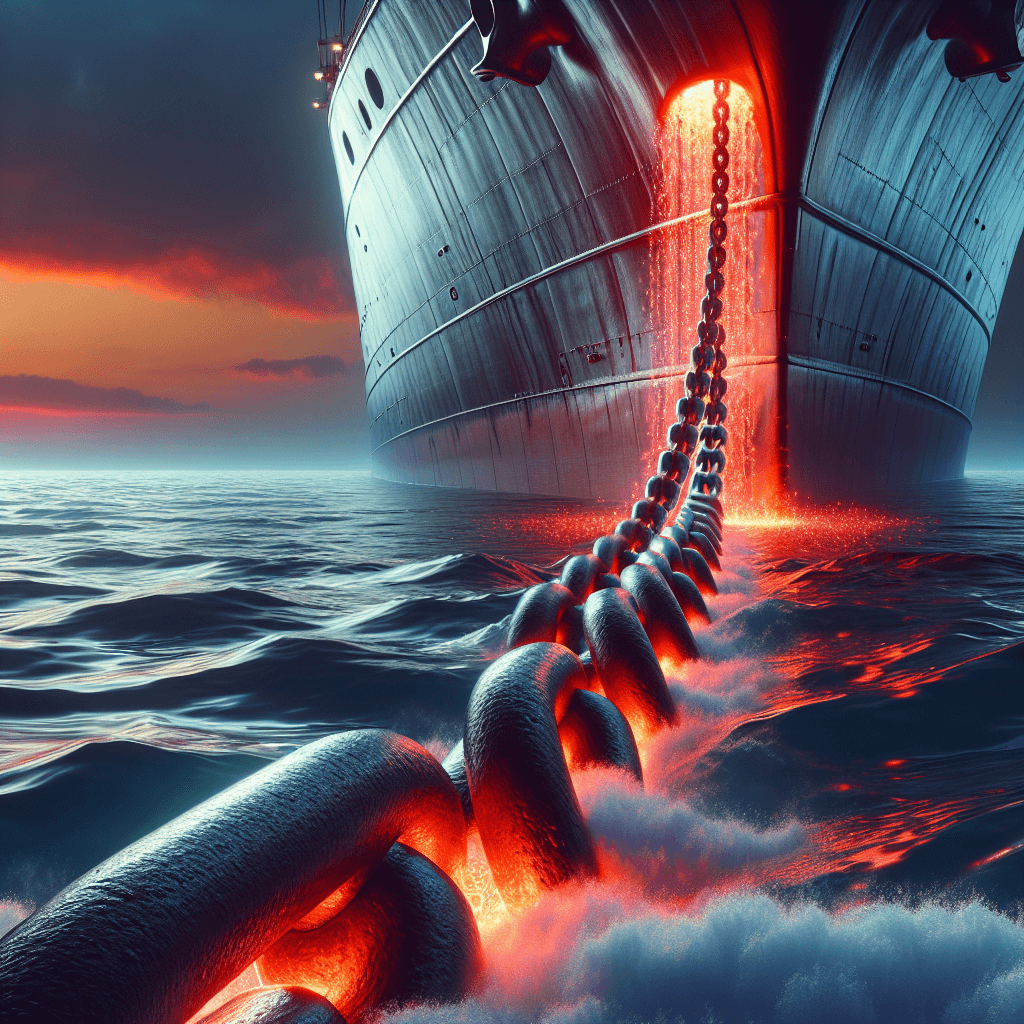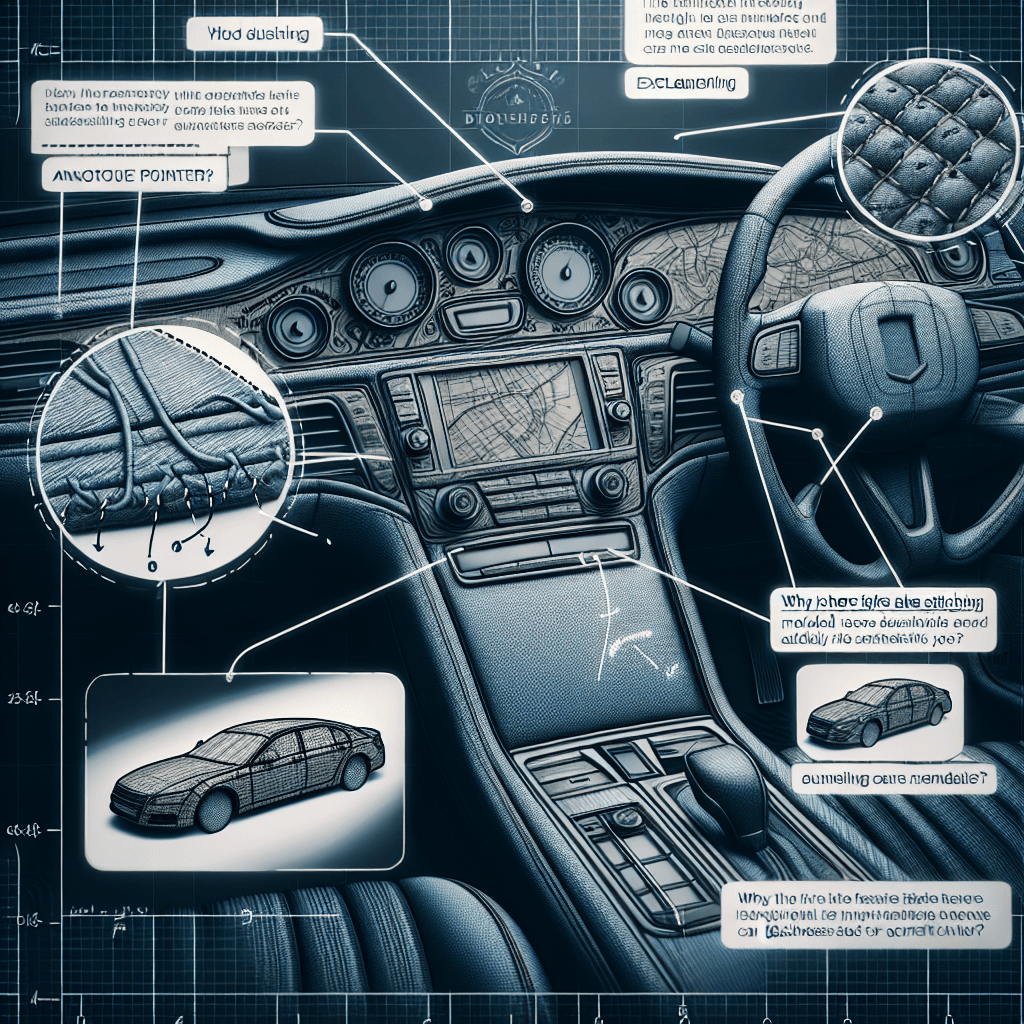Why does a ship's anchor chain sometimes glow red-hot when being dropped
Plunging into the cold sea, a ship's massive anchor chain can glow with the heat of a forge—discover the incredible display of raw energy that makes cold steel turn red-hot.


Too Long; Didn't Read
TLDR: The immense weight of the anchor and chain converts potential energy into kinetic energy as it drops. Extreme friction between the fast-moving chain and the ship then turns that kinetic energy into enough heat to make the steel glow.
Red-Hot Chains: Why Does a Ship's Anchor Chain Sometimes Glow Red-Hot When Being Dropped?
Imagine a colossal steel chain, each link the size of a car tire, plummeting from a ship's deck into the dark sea below. As it accelerates, a shower of sparks erupts, and a section of the massive chain begins to glow a menacing cherry-red. This isn't a special effect from a blockbuster movie; it's a real and dramatic maritime phenomenon. While not a daily occurrence, the sight of a red-hot anchor chain is a powerful demonstration of raw physics. This post will delve into the science behind this incredible event, explaining exactly why a ship's anchor chain can heat up to incandescent temperatures when being dropped.
The Physics of a Falling Giant: From Potential to Kinetic Energy
To understand why an anchor chain glows, we first need to appreciate the immense forces at play. A large commercial vessel, like an oil tanker or a container ship, has an anchor and chain system that weighs hundreds of tons. When the anchor is housed on the ship, this entire weight is held high above the seabed, storing a massive amount of gravitational potential energy.
Think of it like a roller coaster car paused at the very top of the highest drop. It's motionless, but it holds the potential for incredible speed and energy. The moment the anchor is released, this stored potential energy begins to convert into kinetic energy—the energy of motion. The heavier the chain and the deeper the water, the more potential energy is available to be converted, resulting in a chain that falls at an astonishing speed.
The Real Culprit: Extreme Friction
While the conversion to kinetic energy explains the chain's speed, it doesn't explain the heat. The true cause of the glowing phenomenon is friction. As the heavy chain pays out at high velocity, it doesn't just fall cleanly into the water. It grinds and scrapes with immense force against several key components of the ship.
The Hawsepipe and Brake System
The two primary sources of this intense friction are:
- The Hawsepipe: This is the thick, heavy-duty pipe in the ship's bow that the anchor chain passes through on its way from the chain locker to the sea. As the chain thunders through this confined space, the metal-on-metal contact generates an incredible amount of heat.
- The Windlass Brake: The windlass is the machine that heaves and lowers the anchor. During a controlled drop, the windlass motor is used. However, in a very fast or emergency "let-go" drop, the chain is released under the control of a powerful brake. The friction between the brake drum and the band, working to control the immense momentum, can generate enough heat to make the components glow.
This isn't like rubbing your hands together to warm them up. This is tons of steel moving at high speed, creating friction on a monumental scale. The energy that was once stored as potential energy is violently converted into thermal energy (heat) at these friction points. When enough heat is generated in a concentrated area, the steel of the chain links and the hawsepipe can reach temperatures exceeding 500-600°C (over 1,000°F), causing them to glow red-hot.
When Does This Happen? Not Your Everyday Anchoring
It’s important to note that this is not a routine event. In standard anchoring procedures, the anchor and chain are "walked out" or lowered under power using the windlass motor. This is a slow, carefully controlled process specifically designed to prevent a high-speed free-fall and the dangerous conditions it can create.
The red-hot chain phenomenon is typically only seen in specific situations:
- Emergency Anchoring: In an urgent situation, such as engine failure near a hazard, the anchor might be "let-go" to fall freely and stop the ship as quickly as possible.
- Deep Water Anchoring: When anchoring in very deep water, the sheer weight of the suspended chain is enormous, requiring the brake to work much harder to control the descent, which can lead to overheating.
- System Malfunction: A failure in the windlass motor or brake system could lead to an uncontrolled, high-speed release of the chain.
Conclusion: A Lesson in Energy Conversion
The sight of a glowing anchor chain is a visceral reminder of the colossal forces managed in maritime operations. It is a perfect, real-world example of the fundamental principles of physics taught in a classroom. The process is a dramatic chain reaction of energy conversion: from the quiet potential energy of the raised anchor, to the violent kinetic energy of its fall, and finally, into the intense thermal energy of friction, powerful enough to make solid steel glow. So, the next time you see a massive ship, you can appreciate the incredible energy it holds in check, and the brilliant, fiery display that can occur when that energy is unleashed.


